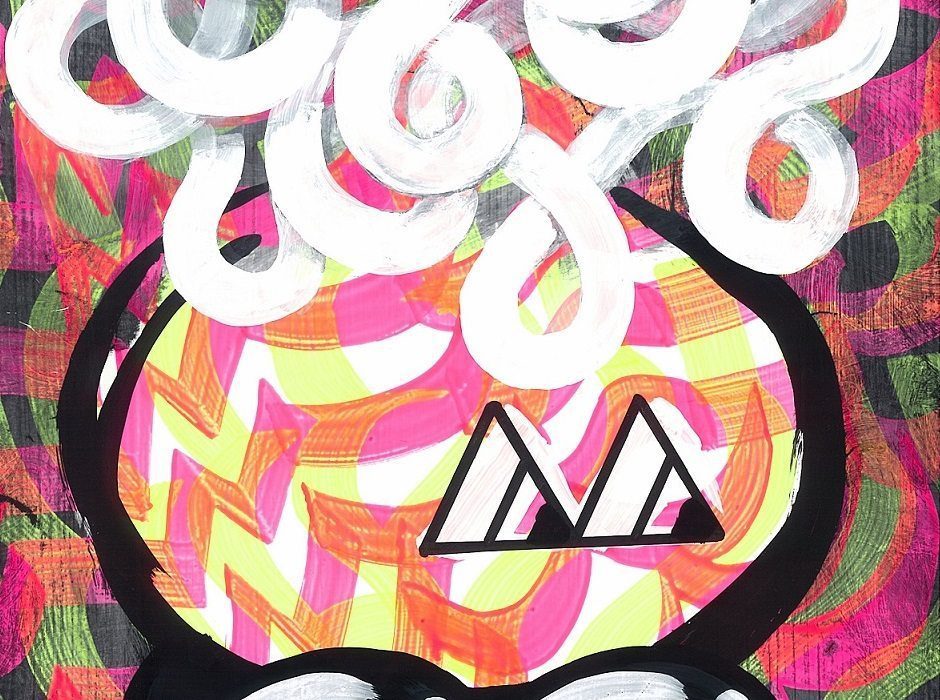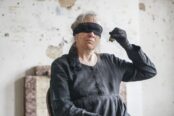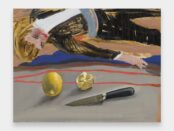[dropcap style=”font-size:100px; color:#992211;”]W[/dropcap]hen I call Rebecca Pelly-Fry, Director of Griffin Gallery London, she is in the midst of the final week of an exhibition featuring the work of undergraduates and postgraduates from L’ École Nationale Supérieure des Beaux-Arts in Paris.
As our conversation evolves it becomes clear that the show, not only epitomises the Gallery’s focus upon materiality in contemporary art practice and the support of emerging artists, but also the dedication and sincere commitment to education and development within the arts that distinguishes Rebecca and her team. The project has been an evolving dialogue between the gallery, the students and the material sponsors of Griffin (Winsor&Newton and Liquitex to name but a few), with the aim of developing the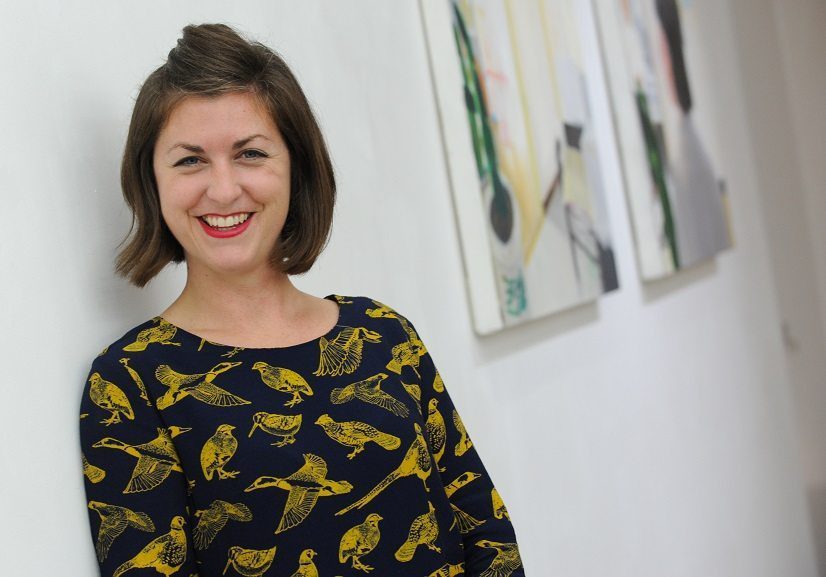 collaborative exhibition now on display. The new work is a response to the experience of using the supplied paints and printing materials and is refreshing exposition of how traditional working methods can be pushed into surprising, game changing directions.
collaborative exhibition now on display. The new work is a response to the experience of using the supplied paints and printing materials and is refreshing exposition of how traditional working methods can be pushed into surprising, game changing directions.
The project has required many trips between Paris and London over the past year and is one that is clearly close to Rebecca’s heart, both in terms of the international links and the direct interaction with students. The exhibition programme at Griffin is in fact only the surface of an ever-expanding network of projects and partnerships, which lightly pepper her conversation with an ease that belies the staggering energy required to maintain such a diverse programme.
Partner offices to the Gallery are located all over the world– from Italy to the US– making for a wealth of opportunities to introduce new dialogues into the London market. Likewise, on the home front, Rebecca works with The Fine Art Collective to provide workshops, talks and resources for Fine Art students across London, to enhance their knowledge of materials and making processes. There are already plans for the expansion of the project and Rebecca’s hope is that it will become a valuable resource in the gradual return to a focus upon craft, as well as concept, in contemporary practice.
Rebecca took some time in the days before our chat to answer some more formal questions regarding Griffin’s current projects. As in conversation, her answers have a confidence which reflects a gallery carving a distinctive name, both as a platform for the best of today’s raw creative talent, and as a pioneer for more interactive public engagement programmes in the arts.
As a starter for ten… how would you describe the ethos of Griffin Gallery?
We are a platform for emerging and mid-career artists. Our main aim is to profile artists at a critical point in their career, helping to boost their profile. We focus mainly on group shows, curated in-house or through carefully selected partnerships, that set the work within a specific context and encourage dialogue around materiality in contemporary art.
How does this compare with your work before your involvement with the Gallery, and how has the criteria for selecting artists developed since you joined the team?
Before joining Griffin Gallery in early 2013, I had been working as a Local Authority Arts & Culture Officer – first for Kensington & Chelsea, then Camden. Before that, I was in the North East (Durham and Newcastle), variously working for a commercial art gallery, an arts development charity, running festivals and arts projects, and working as an artist.
When I joined Griffin, I realised that I was coming in to a space with huge potential but with little or no strategy. The space had been open for about a year, and had a wide variety of different shows across that time. For me, the most important task was to establish a clear ‘voice’ and line of thinking for the gallery. We now focus very much on supporting talented emerging artists, particularly those with an interest in and engagement with materials. I guess there is an element of wanting to put our stake in the ground and say that we believe the artists we show are going to go on to great things.
The collaborative element of Griffin is clearly illustrated in your partnerships with other galleries. Specifically you worked with Charlie Smith Gallery for the Young Gods showcase of graduate artists. Do you think this more fluid exhibition approach is something we’ll be seeing more of in the art world in general?
Absolutely. In fact, I think we’re already seeing it pretty much everywhere. It’s becoming increasingly difficult for gallery spaces to draw traffic as we compete with the ever-expanding global art fair circuit, so collaboration is a way to raise profile and connect audiences. I also think it brings a different viewpoint, a different curatorial vision, to a space or organisation which means there’s always a new conversation going on. I really value working with other organisations, galleries and curators – I always learn something new from each collaboration, and I like to think it’s a two-way thing!
Venice fever is revving up again for this year; bringing together cultures from all over the world. Your upcoming on-site exhibition Two Truths also crosses geographical boundaries by highlighting the work of Japanese artists. What drew you to Eastern contemporary practice as a point of focus and, how do you see the cross over as fitting within a wider social and cultural context?
Well, there’s a very practical reason behind the exhibition – I was invited to join the panel of an Art prize in Tokyo last year, run by our Japanese partners BonnyColArt. I invited the winners of the prize to exhibit at Griffin Gallery, and decided it would be interesting to show them alongside London-based Japanese artists who are a little further along in their career. The interesting thing about this process is that I wasn’t exactly sure what the outcome would be, but it’s turned out better than I expected – the contrasts between the Japan-based and UK-based artists are really quite extraordinary and I think will generate some interesting discussion around cultural influences and aesthetics.
Two Truths also sets established artists against emerging ones. Could you tell me more about what you hope to convey through these dialogues?
In this particular situation, what I’m aiming to explore is what effect the social, cultural and political context of moving to a new country has on artistic practice. The three London-based artists all moved to the UK from their native Japan to study, and all made the decision to stay and make their careers here. For me what’s interesting about comparing their work with the three young artists from Japan is that there really is a marked difference, in everything from content to colour palette.
What would you say is the main challenge for emerging artists today and what advice would you give them?
There are many challenges… Being an artist is one of the hardest things in th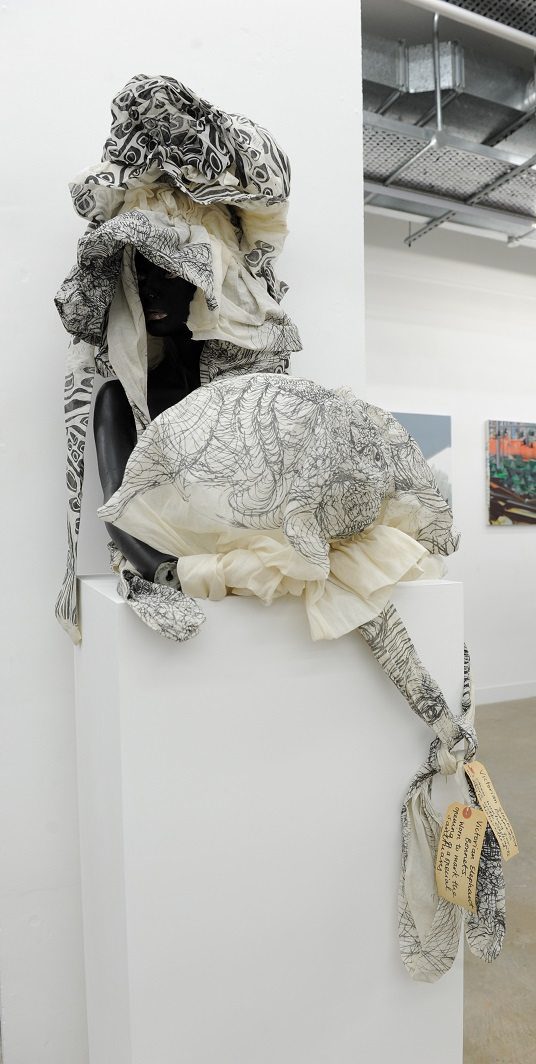 e world! On the flip side, of course, if you get it right it can also be the most rewarding and exhilarating thing in the world. Most artists tell me that if they had any other choice they would choose NOT to be an artist… but it tends not to be a choice. It is a calling.
e world! On the flip side, of course, if you get it right it can also be the most rewarding and exhilarating thing in the world. Most artists tell me that if they had any other choice they would choose NOT to be an artist… but it tends not to be a choice. It is a calling.
In all honesty, all that is really needed is a strong sense of self-belief and a drive to succeed. If you have those things (and a healthy dollop of talent is also helpful!) then nothing can stop you. Don’t ever take no for an answer, and don’t rely on anyone but yourself for your own success. I have the utmost respect for those artists who have created their own destiny, rather than waiting for a gallery or an agent to do it for them.
You are both housed in the same building and work closely with ColArt. Could you describe your relationship with them and also how this influences the curation for your exhibition programme and the aesthetic of the work you are drawn to?
Put simply, ColArt owns the gallery and employs me to run it for them. When I took over Directorship of the gallery, ColArt told me they had a vision of it being a hub of activity that drew people from all over London (and the world, eventually)… That was a challenge I was delighted, if slightly daunted, to accept! I felt it made sense to connect the curatorial programme to the fact that ColArt are an international art materials manufacturer through establishing a dialogue around materiality and craftsmanship. We also decided to focus mainly on emerging artists, as we are lucky enough to be able to take risks with the work that we show and wanted to offer our support to artists when they most need it.
In terms of my own personal curatorial aesthetic, I am particularly interested in the meeting point between conceptual rigour and technical ability. The artists I am most interested in are those that demonstrate a complete and almost obsessive commitment to a singular line of thinking.
The arts market has seen a gradual return to painting as a medium, framed within a conceptual language. Do you think that the marrying of cutting edge science with a traditional medium, as explored in your onsite Innovation Laboratory, is the way forwards in terms of keeping painting alive?
I never really went along with that whole ‘painting is dead’ mantra of the end of the last century. Painting is such a fundamental human activity, and arguably the most expressive of all creative media, that just do not believe it will ever lose its relevance. However, art materials manufacturers such as ColArt do absolutely need to keep abreast of changing technologies and needs of artists – having artists working alongside our resident chemists is a wonderfully organic way for us to ensure this happens. Innovation is at the heart of our company ethos, and working closely with artists allows us to tailor our innovations specifically to our audience. It’s a very exciting thing to be part of, because you never really know what the outcome might be.
You have been curating an expansive public events programme alongside your exhibitions. I notice that this includes practical workshops alongside the more ubiquitous panel discussions and talks of other commercial galleries. What do think is the importance of engaging visitors, both verbally and physically, in the making process and skills behind contemporary practice?
For us it’s vital that there is a critical engagement with the physical act of making artwork, as well as the more common philosophical discussion of concept. As you alluded to in one of your previous questions, we are seeing a real resurgence in an interest in process and materials within contemporary art, and it makes sense for us to capitalise on this interest, and to establish ourselves as a catalyst for that dialogue.
As a company, we often work very closely with the conservation industry, helping them to overcome challenges with changing technologies and the preservation of artworks made with modern materials. I am actually quite keen to start a campaign to reinstate a sense of responsibility with the artists themselves regarding the future conservation of their artwork – in other words, educating artists about materials and how to ensure they are creating artwork that will stand the test of time.
In light of this, it’s interesting that your impending off-site collaboration is with London Craft Week, which not only aims to expose the hidden crafts of the city and the making processes behind production but also brings together lesser known and established designers, brands and makers. What do you have planned and how have you used the ethos of the week to develop and enrich some of the existing aims of the gallery?
We are collaborating with an organisation called QEST (Queen Elizabeth Scholarship Trust) to present new work by 12 pairs of artists/makers in The Crypt Gallery at St Pancras Church. The idea behind the project was to pair contemporary artists with traditional makers, asking them to collaborate to create new work that challenges the perceptions on both sides.
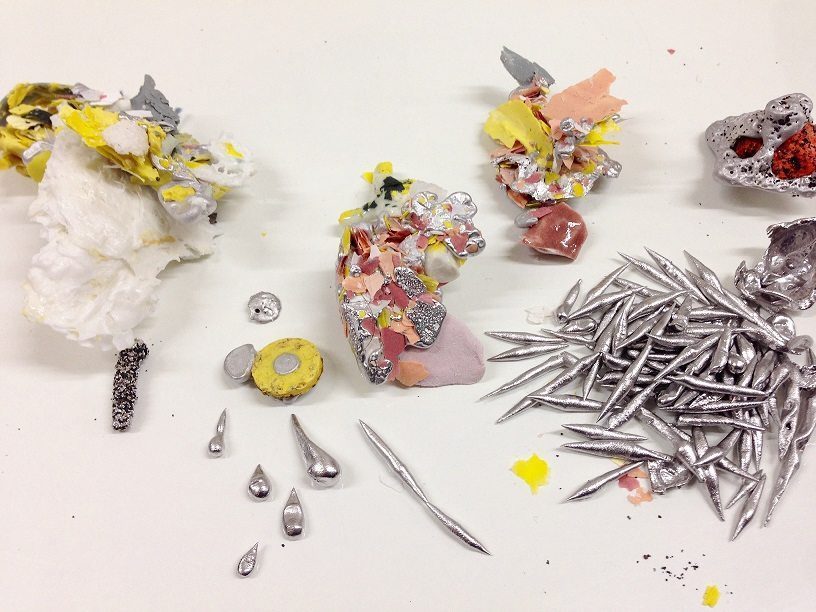 Rosanna Martin, Site-Specific Piece for MAKE CREATE In Progress
Rosanna Martin, Site-Specific Piece for MAKE CREATE In Progress
For Griffin Gallery, this is a great way to showcase what we do outside of the gallery space and the project also absolutely chimes with the dialogue around materials and making that we advocate.
Which emerging artists and galleries are on your radar at the moment and what does the future hold for Griffin’s own development?
Big question! In terms of artists, it’s always difficult to pick because we work with so many amazing people. However, if I was going to flag up a few that I thought were particularly interesting right now, I would have to say Chudamani Clowes, our current Griffin Art Prize winner and artist-in-residence, is one to watch. She has a solo show coming up in September this year at Griffin. From our current exhibition, Selective Memories, I would pick out current student of Beaux Arts in Paris, Theodore Parizet – his abstract compositions are extraordinarily confident for such a young artist. And finally, an artist I’m very much looking forward to working with later this year is Alice Anderson, who works across performance, sculpture and installation. She will be exhibiting in Perfectionism (part II) in October.
Two Truths opens at Griffin Gallery, W11 4A 28th April – 11th July 2015 and Make Create at St Pancras Church, NW1 2BA, 6 – 10th May
Inset image: Chudamani Clowes, Elephant head with bonnet, Printed fabric, 2013, 40 x 60cm
For further information see the Gallery website

